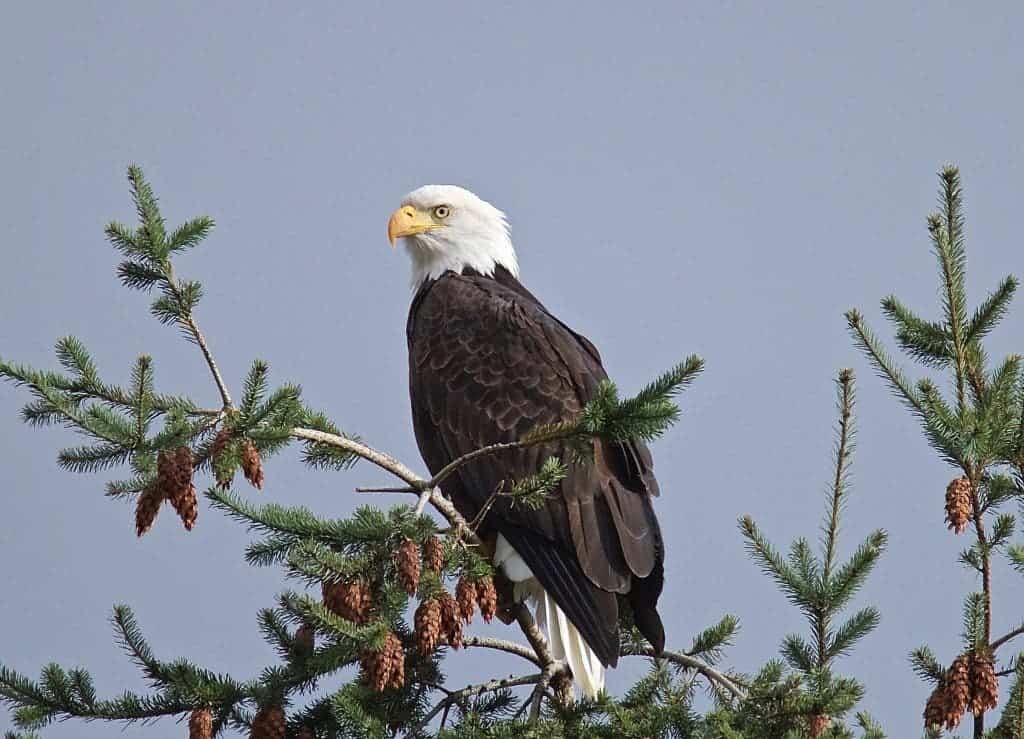Once on the brink of extinction, the recovery of the American bald eagle has now turned into one of the most successful conservation stories in the United States.
A report by the US Fish and Wildlife Service showed that the population of the eagle (Haliaeetus leucocephalus), a national symbol of the US, has quadrupled since 2009 — and it’s all because of the long-term conservation efforts across the country.

Bald eagles are not actually bald — the name stems from an older meaning of the world “bald”, which meant “white-headed”. Despite being the national bird of the US, these magnificent birds of prey were steadily on the decline, being very close to extirpation across the country in the 20th century. But since then, things have steadily improved.
There are an estimated 316,700 individual bald eagles and more than 71,400 breeding pairs in the lower 48 states, according to researchers from the Service’s Migratory Bird Program. The species had reached an all-time low of 417 known breeding pairs in 1963, leading to swift action from the government and conservation organizations.
“It’s truly a historic conservation success story,” US Secretary of the Interior Deb Haaland said in a statement. “Announcements like ours today give me hope. I believe that we have the opportunity of a lifetime to protect our environment and our way of life for generations to come. But we will only accomplish great things if we work together.”
Distinguished in the adult plumage by a white head and white tail, bald eagles are powerful, brown birds that may weigh 14 pounds and have a wingspan of 8 feet. They live near rivers, lakes, and marshes where they can find fish, their staple food. As their populations grow, however, bald eagles are expanding their range, even nesting in urban areas.
The US adopted the bald eagle as the national symbol in 1782, with anecdotal accounts stating the country may have had as many as 100,000 nesting eagles at some point. The first major decline of the species probably began in the mid to late 1800’s and continued over the years, mainly because of habitat destruction, illegal shooting and the contamination of its food with pesticides.
The species was then listed as endangered, which provided the springboard for the Fish and Wildlife Service and its partners to accelerate the pace of recovery through captive breeding programs, reintroduction efforts, law enforcement, and nest site protection during the breeding season. This adds up with the government banning the pesticide DDT.
US Fish and Wildlife Service Principal Deputy Director Martha Williams said the recovery of the bald eagle is “one of the most well-known conservation success stories of all time.” She added that the service continues working with state and federal agencies, tribes, non-government organizations and private landowners “to ensure that our nation’s symbol continues to flourish.”
For the new survey of the bald eagle, biologists and observers carried out aerial surveys in 2018 and 2019. They flew over high-density eagle nesting areas to generate accurate estimates and count occupied nesting territories. They also worked with Cornell University to use eBird relative abundance data to acquire information on the areas that were not practical to fly as part of the aerial surveys.
While the news is welcoming and shows conservation pays off, other birds haven’t had the same luck in the US. A 2019 study showed that North America has lost more than a quarter of its entire bird population, or around 3 billion birds, over the past half-century. Researchers brought together a variety of information that has been collected on 529 bird species since 1970.


